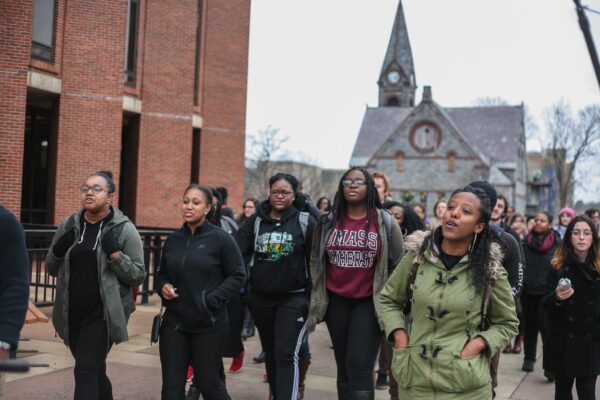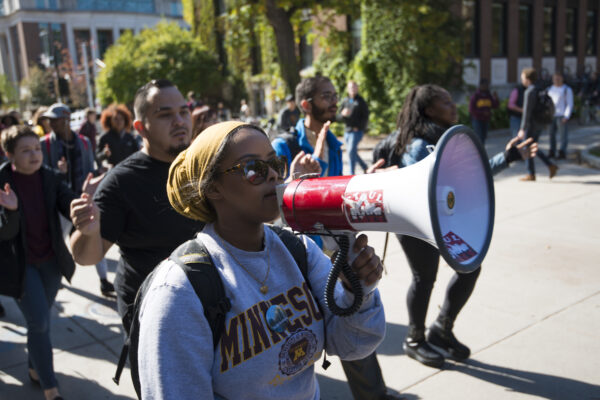By Louis Soares
In March 2018, ACE convened a group of 15 current and former presidents and association leaders for a roundtable to reflect on what the American College President Study data tell us about their own experiences leading colleges and universities. The discussion provided context to help us understand the qualities that demonstrate innovative leadership—a trait that is easy to spot but hard to define.
Observations from the roundtable, shared anonymously, are outlined in our new brief, Innovative Leadership. The qualities that emerged may surprise you: Innovative leadership is not necessarily about predicting the future or having the newest idea. Instead, it’s about how a leader responds to current challenges—both on their own campus and in higher education more generally.
Why Innovation, Why Now
College presidents find themselves in a setting that is unprecedented in its complexity. Even though challenges facing specific institutions vary in type and intensity, there are broad forces reshaping campuses nationwide. These include demographic changes, the increased number and sophistication of competitors, the erosion of public support, and declining public perception and trust.
The convergence of these factors has made for an incredibly turbulent environment, one that has given the higher education community pause to consider what it means to be a modern college president. Interestingly, an innovative presidency is marked less by the latest technology—although that plays a role—and more about enabling faculty, staff, students, alumni, and external stakeholders to achieve shared purpose in the face of uncertainty.
What We Learned
Given the challenges, what approaches can college presidents take to achieve this shared purpose? The report distills several shared characteristics of innovative leaders:
They develop and maintain a senior team. Being a college or university president requires a competent team to help run the day-to-day operations of the institution and advance the institutional mission. Innovative and entrepreneurial presidents recognize the need to develop leaders from within the organization who can fill in at a moment’s notice and ensure organizational continuity.
They emphasize strategic decision-making and cultivate a data-enabled culture. Innovative leaders promote decision-making based on evidence, which can increase the tolerance for strategic risk and small failures. Cultivating positive attitudes toward the collection and use of data enables a culture on campus that elevates informed decision-making at all levels across the campus.
They embrace shared governance. Leaders who are looking to make effective and lasting change on their campuses are introducing multiple perspectives from their boards of regents or faculty leaders. Innovative leaders see shared governance as an opportunity rather than a challenge.
They turn crisis into opportunity. Innovative presidents know that sometimes the best time to make a shift in strategy and planning is when the institution is either in, or near, crisis. These moments provide rare opportunities that, if handled properly, can increase the financial security, prosperity, and growth of the institution.
They communicate and implement. Innovative leaders ultimately realize that success on any campus is dependent on effective communication, decision-making, and implementation campus-wide. They create and empower teams of talented, knowledgeable, and functional administrators who they rely on to carry out their visions.
They engage with peers inside and outside of higher education. These leaders understand that sometimes the best answer for their problems can be found at another institution. Sharing insights and resources on innovative programs and pedagogies benefits not only their institution, but also the practice of higher education as a whole.
They make decisions based on a long-term vision. Innovative presidents make decisions based on a long-term vision shaped by the distinctive history and identity of the campus they lead. They have a tolerance for taking strategic risks associated with potential policy shifts, and thrive on turning challenges or moments of campus crisis into opportunities or accelerants for change. Innovative leaders also strive to create continuity on their campuses and sustain progress. Finally, these leaders are able to establish and leverage both internal and external networks to help them achieve their goals.
All of this is easier said than done.
ACE is committed to helping grow the pool of innovative college and university presidents that propel both their institutions and the field of higher education forward. Our research on evolving business models, shared leadership, and closing equity gaps frames a set of challenges and opportunities that summon the passion, commitment, and expertise of innovative presidents and teams to transform higher education.
The Innovative Leadership brief furthers that cause, and we encourage college and university presidents to do a quick evaluation of the innovative leader characteristics they see in themselves and their teams. This can be accomplished with a few simple questions peppered into one-on-one and cabinet meetings over the course of a working day. Questions could include:
- Does our senior team demonstrate innovative characteristics? Where are our gaps?
- How can we develop learning opportunities to strengthen innovative characteristics in our president and other senior leaders?
- How can we incorporate these characteristics as criteria for talent recruitment?
- Do we have effective tools to understand when a crisis is an opportunity?
Perhaps, most importantly, innovation that will truly transform higher education in ways that serve, students, faculty, staff, and society will require risk and failure as we move forward. We encourage leaders to try—and maybe fail—to be innovative in their decision-making. Innovation is not finding the single, correct decision. It’s the sum of many thoughtful decisions that reflect an overall mindset of turning predicaments into success.
If you have any questions or comments about this blog post, please contact us.



